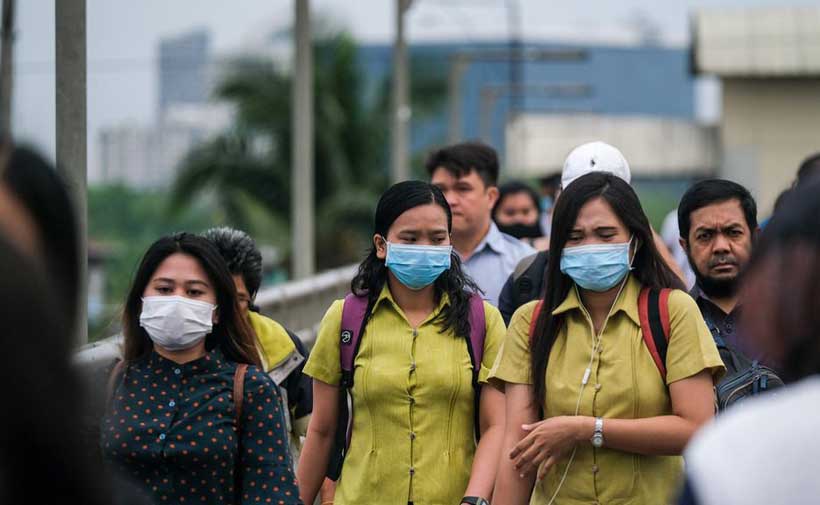A new coronavirus, named by scientists as COVID-19, has taken the entire world in its possession. However the world has not witnessed such diseases for the first time. There have been many other diseases that have immensely struck the globe with a gigantic number of casualties. Some of the deadliest viruses that emerged in the world are Swine flu, Martung virus, Ebola virus, Rabies, HIV (Aids), Smallpox, Hantavirus, Influenza, Dengue, Rotavirus, SARS I, SARS II, MERS, and the recent COVID-19.
The black plague that emerged in Europe in medieval times, which was transferred in humans by rats, also called as “the black death”, resulted in the death of almost 30% to 60% of its population. The entire global population was reduced by a million people. At that time, the medical field was also not well developed and the pupil relied more on god to protect them.
The emergence of pandemics known as the SARS (Severe Acute Respiratory Syndrome) and MERS (Middle Eastern Respiratory Syndrome) also resulted in many deaths but was confined to certain areas. SARS, MERS and COVID-19 are basically respiratory viruses, with more or less the same symptoms. SARS and MERS both were cured by quarantine but the effects on the economy were enormous, regionally and globally.
SARS initially emerged in Southern China and disappeared in two years. The pandemic emerged in 2002-2003 from bat’s to civets then humans. Around 80,000 deaths were witnessed with a 10% mortality rate. SARS took around 130 days in spreading. It also helped the World Health Organization to develop a framework and networking of understanding, reporting as well as diagnosing diseases everywhere across the world.
MERS emerged in the 2012, in the Middle Eastern part of the world. Mers is believed to be transmitted from camels to humans, and was further spread by humans. The virus had a high mortality rate of 35%, with around 25, 000 total decreases. Mers was spread across a thousand people in about 2 and a half years.
COVID-19 is believed to be an extension of these viruses according to scientists.
Corona words come from the Latin word “crown”, due to its crown-liked appearance. The virus was first reported in the Chinese province of Wuhan in December 2019, and initially the transmission of the virus was traced from bats. The virus started spreading from human to human interactions and resulted in infecting almost all parts of the world. According to WHO its mortality rate is 3.4% as of 3rd March 2020. But by 11th April 2020, the confirmed cases across the globe have increased to 1,569504 with 95269 reported confirmed deaths affecting almost 213 countries.
It is rather an alarming situation that only in months the virus is gaining its pace and increasing the mortality rate globally. The biggest risk at the moment is the nature of the virus and its tendency to spread, which isn’t limited to humans but mammals. Initially it was believed that middle and older aged humans are prone to this virus, but later children and young individuals couldn’t fight for life against this deadly disease.
Some experts also view influenza more dangerous than novel coronavirus. According to the World Health Organization, the affected numbers of people by the flu are around 5 million and 650,000 casualties globally. However, the difference between Corona and Influenza is that a vaccine and several other medications have been developed by medical sciences to cure Influenza. But despite massive technological advancements and great medical discoveries, a vaccine or medicine to cure the COVID-19 virus has not been developed yet. Recently it has also been tested that transferring plasma of a recovered patient from COVID-19 to an affected person, results in the killing of the virus in a human body.
Another major difference between the novel coronavirus and other deadly diseases/viruses is that COVID-19 has resulted in a global lockdown. The disease has badly struck even the global powers, with only casualties in the United States being
18,763, further increasing by each passing day. Many drugs and domestic treatments have been introduced to masses as well as some sort of lockdown has been imposed by states to limit its spread.
As the world’s economy is coming down to ashes, an environment of panic and agony surrounds many. The developed states face commodity crises, and the unemployment ratio has increased. On the other hand, the situation in developing and underdeveloped states is leading to a serious crisis both economically and socially.
The world that became a global village once is now opting for de-globalization due to this pandemic. Despite the promotion of distances, the hearts of people are uniting. All states are extending their help and support, with provision and exchange of medical aids and goods. Special reliefs and assistance are being provided to developing states.
A time when the world was coming towards the brink of nuclear conflicts, a pandemic has become a source of uniting them against a common enemy. The surprising shift from saving the economy to saving the lives of people has become a new goal in today’s world. The contemporary international community believes in different theory, that economic loss can be compensated but not the loss of lives.


